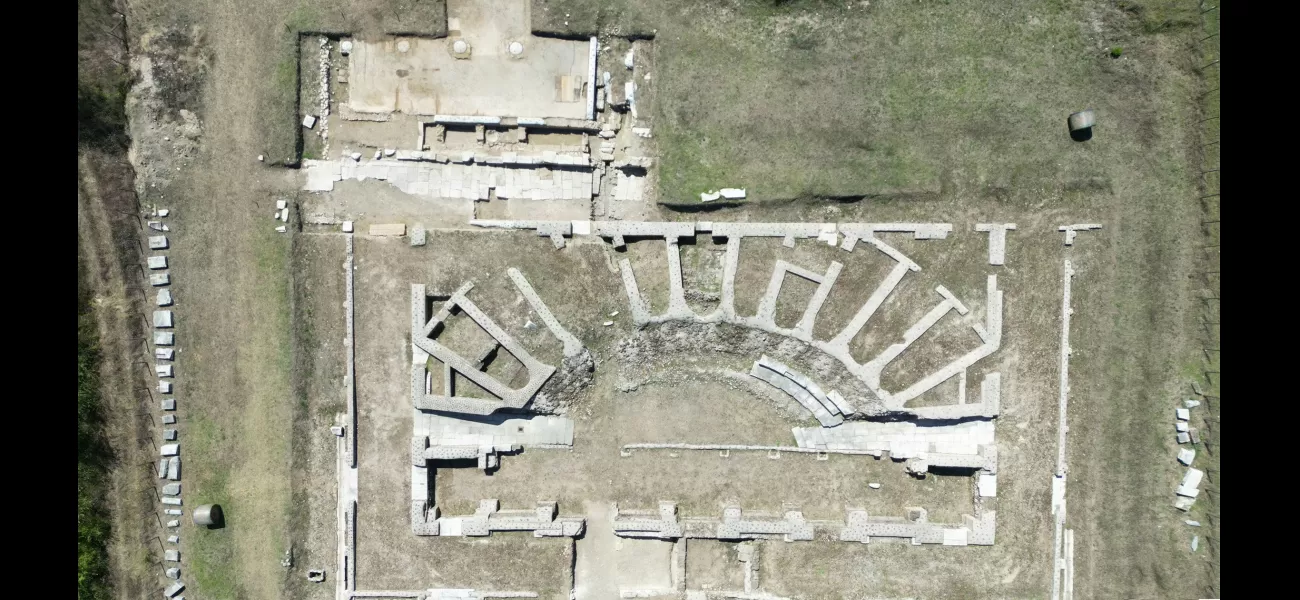Archaeological dig may alter our current understanding of the Roman Empire's decline.
Roman towns in central Italy were thriving in 3rd c., despite the Empire's decline.
December 12th 2023.

Interamna Lirenas, a Roman dig site located in central Italy, was initially written off as 'unpromising' due to the lack of visible ruins. However, a 13-year study involving dig sites and radar surveys has unearthed evidence suggesting the town was much more than that. In fact, it was still thriving well into the 3rd century AD, when instability and civil wars were starting to plague the Roman Empire.
This means that life for many ordinary Romans may not have been as adversely affected as initially thought. Professor Dr Alessandro Launaro, who led the research, said: "We started with a site so unpromising that no one had ever tried to excavate it - that's very rare in Italy. There was nothing on the surface, no visible evidence of buildings, just bits of broken pottery. But what we discovered wasn't a backwater, far from it. We found a thriving town adapting to every challenge thrown at it for 900 years."
The Cambridge University-led study analysed pottery fragments, and the finds challenge assumptions about the Roman Empire's decline. Dr. Launaro went on to add: "We're not saying that this town was special, it's far more exciting than that. We think many other average Roman towns in Italy were just as resilient. It's just that archaeologists have only recently begun to apply the right techniques and approaches to see this."
The digs and radar surveys conducted by the team uncovered a 1500-seater roofed theatre, a market, a temple, a bath complex, and a large warehouse, suggesting the town was a river port. A 3D image showing what the theatre would have looked like was also created. The professor said: "The fact that this town went for a roofed theatre, such a refined building, does not fit with a backwater in decline. This theatre was a major status symbol. It displayed the town's wealth, power and ambition."
The town was founded in 312BC, and Julius Caesar became its patron in 46BC. Dr. Launaro said the town "would have been valuable" to the Roman dictator as it was "strategically located between a river and a major road, and it was a thriving node in the regional urban network". Interamna Lirenas eventually abandoned in the 6th century AD as Germanic invaders advanced deeper into modern-day Italy. This study was recently published in the edited volume Roman Urbanism in Italy.
This means that life for many ordinary Romans may not have been as adversely affected as initially thought. Professor Dr Alessandro Launaro, who led the research, said: "We started with a site so unpromising that no one had ever tried to excavate it - that's very rare in Italy. There was nothing on the surface, no visible evidence of buildings, just bits of broken pottery. But what we discovered wasn't a backwater, far from it. We found a thriving town adapting to every challenge thrown at it for 900 years."
The Cambridge University-led study analysed pottery fragments, and the finds challenge assumptions about the Roman Empire's decline. Dr. Launaro went on to add: "We're not saying that this town was special, it's far more exciting than that. We think many other average Roman towns in Italy were just as resilient. It's just that archaeologists have only recently begun to apply the right techniques and approaches to see this."
The digs and radar surveys conducted by the team uncovered a 1500-seater roofed theatre, a market, a temple, a bath complex, and a large warehouse, suggesting the town was a river port. A 3D image showing what the theatre would have looked like was also created. The professor said: "The fact that this town went for a roofed theatre, such a refined building, does not fit with a backwater in decline. This theatre was a major status symbol. It displayed the town's wealth, power and ambition."
The town was founded in 312BC, and Julius Caesar became its patron in 46BC. Dr. Launaro said the town "would have been valuable" to the Roman dictator as it was "strategically located between a river and a major road, and it was a thriving node in the regional urban network". Interamna Lirenas eventually abandoned in the 6th century AD as Germanic invaders advanced deeper into modern-day Italy. This study was recently published in the edited volume Roman Urbanism in Italy.
[This article has been trending online recently and has been generated with AI. Your feed is customized.]
[Generative AI is experimental.]
0
0
Submit Comment





